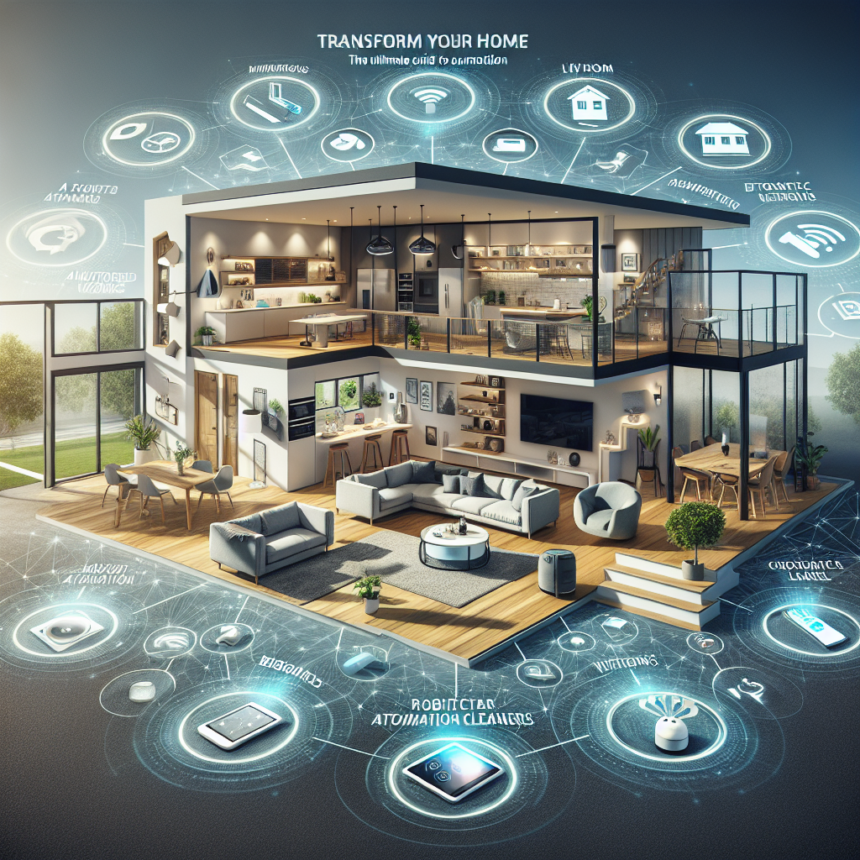Transform Your Home: The Ultimate Guide to Smart Living and Automation
In today’s fast-paced world, smart living has transcended from trendy to essential. The integration of technology into our homes has recalibrated the way we live, making daily tasks easier, providing enhanced security, and improving energy efficiency. Welcome to the future: a home that thinks for you! This guide to smart living and automation will explore the benefits, components, and practical steps you can take to transform your home into a smart sanctuary.
Understanding Smart Living
Smart living refers to the seamless integration of technology, enabling your home to monitor, manage, and enhance various aspects of day-to-day life. A smart home is often built around interconnected devices that communicate with each other, providing you with greater control and convenience. From smart lighting to advanced security systems, the possibilities are endless.
Why Go Smart?
-
Convenience: One of the biggest draws of smart living is convenience. Imagine controlling lighting, temperature, and security from a single device—your smartphone. Smart homes allow you to automate these tasks, so you can spend less time worrying about household chores and more time enjoying life.
-
Energy Efficiency: Smart devices are designed to optimize energy consumption. Smart thermostats can learn your temperature preferences, adjusting the heating or cooling accordingly. Smart plugs can be programmed to cut off power to devices that are not in use, significantly reducing your energy bill.
-
Enhanced Security: Automated security systems with features such as smart locks, cameras, and motion sensors can help keep your home safe. You can receive real-time alerts on your phone if suspicious activity occurs, giving you peace of mind whether you’re home or away.
- Comfort: Adjusting your environment to suit your mood is easier than ever. Smart systems can modify lighting for movie nights, adjust temperature settings for a cozy atmosphere, and even play your favorite music all at your command.
Components of a Smart Home
To embark on your smart living journey, consider incorporating the following components:
-
Smart Hubs: A smart hub acts as the brain of your smart home, connecting all your devices and allowing them to communicate with one another. Popular choices include Amazon Echo, Google Nest Hub, and Samsung SmartThings.
-
Smart Lighting: Replace traditional light bulbs with smart LED bulbs that can be controlled via smartphone or voice commands. Brands like Philips Hue and LIFX offer customizable colors and brightness settings.
-
Smart Thermostats: Devices like the Nest Learning Thermostat adapt to your heating and cooling preferences over time, helping you save on energy costs while ensuring comfort.
-
Smart Security Systems: Invest in smart locks, doorbell cameras, and security cameras that can be monitored remotely. Brands like Ring and Arlo have gained popularity, offering various features such as night vision and two-way communication.
-
Smart Appliances: From smart refrigerators to robotic vacuums, appliances are becoming increasingly intelligent. These products can often be controlled via apps, making cooking and cleaning significantly easier.
- Smart Speakers: Devices like Amazon Echo and Google Home not only play music but also serve as your home’s virtual assistant, controlling other smart devices through voice commands.
Steps to Transform Your Home
-
Assess Your Needs: Start by evaluating what aspects of your home you want to automate. Is it security, energy efficiency, or convenience that appeals to you most?
-
Create a Budget: Smart home technology can range from cost-effective solutions to high-end systems. Determine how much you are willing to invest for transformation.
-
Start Small: If you’re new to smart living, begin with a single device, such as a smart bulb or speaker. Gradually expand as you become more comfortable with the technology.
-
Choose the Right Ecosystem: Consider the compatibility of devices you select. Sticking to one ecosystem, like Apple HomeKit or Google Home, can simplify integration.
-
Prioritize Security: Ensure that your smart devices are securely installed to prevent unauthorized access. Regularly update software and set complex passwords.
- Enjoy Automation: Program routines to optimize your smart home’s performance. Set scenes for different times of the day, like morning routines or movie nights.
FAQs
Q1: What is a smart home?
A smart home is a residence equipped with devices that can be controlled remotely or automated, often connected through the Internet.
Q2: How secure are smart home devices?
While most smart devices have security measures in place, it is essential to regularly update firmware, use strong passwords, and enable two-factor authentication.
Q3: Do I need a smart hub?
A smart hub can enhance the functionality of your devices by allowing them to communicate with one another, but some devices can operate independently through their respective apps.
Q4: How much can I save on energy bills with a smart home?
Savings vary based on device usage and efficiency improvements; many users report a 10-30% reduction in their energy bills with smart devices.
Q5: Can I install smart devices myself?
Many smart devices are designed for easy installation, often requiring only a Wi-Fi connection, but for complex systems, you may want to hire a professional.
Transforming your home into a smart living space is a remarkable journey that enhances comfort, security, and efficiency. With the right approach and technology, you can create a home that truly works for you. Happy automating!









